Vietnamese Basa/Tra Fillets Exports to US Market Hampered by the New Product-Specific Input Reporting Requirement
In Vietnam-US bilateral trade, Vietnamese exports of frozen Basa/Tra (or, pangasius species within the family of Catfish) fish fillets has all along been a controversial issue. After normalization of trade relations between Vietnam and United States, epitomized by the signing of the Bilateral Trade Agreement (“BTA”) in 2000, the trade betweenthe two countriesreceived a significant boost. For instance, Vietnamese exports of Basa/Tra frozen fish fillets to the US market shot up within a short time, and Vietnam soon accounted for a significant share of the frozen catfish fillets sold in the United States. The main reason behind this success is the superior quality of fish meat due to the Vietnamese technique of farming catfish in their natural habitat using underwater fish cages in the Mekong delta, as well as a comparatively low production cost while the operating costs of U.S. catfish farms are significantly higher. As such, Vietnamese exports pose a threat to the domestic market share of the US southern catfish farmers, who continue to be underprepared for serious and sustained competition due to a lack of innovation. Consequently, the affected US domestic farmers have been spearheading a high-voltage campaign impeaching the quality of Vietnamese fish fillets and levelling allegations of dumping and underpricing in the US market. Broadly, they have attempted to stall the Vietnamese exports in the following two ways:
- Tariff Barriers – The U.S. Anti-Dumping (“AD”) duty Investigation proceeding, which commenced in 2001, and has been followed by several annual AD review proceedings.
- Non-Tariff Barriers–First outlawing the use of the term “catfish” for any imported Vietnamese fish. Second, engendering the United States Department of Agriculture (“USDA”) Food Safety and Inspection Service (“FSIS”) Inspection regime, involvingstrict USDA oversight and certification regimes. These regulations dictate the slaughtering and processing of fish, ostensibly to check the use of chemicals and antibiotics. In essence, the USDA-FSIS regulation is a non-tariff trade barrier disguised as a food safety measure, conceived and designed to benefit a handful of domestic catfish growers in southern US states.This regulation went into effect on March 1, 2016, followed by an 18-month transitional period so that it will be fully enforced starting September 1, 2017.
This article focuses on a particular element of tariff barrier, specifically on a very important methodological aspect in the ongoing AD review proceedings covering Vietnamese fish fillets exports.
The AD margin is based on the price difference between the export price of actual goods sold and the fair or normal value of identical or comparable merchandise. In the case of US AD proceedings on frozen fish fillets, the US Department of Commerce (“Commerce” or “DOC”) measures the margin of dumping by comparing the Vietnamese exporter’s US sales price of frozen fish fillets with the fair market value (or, normal value) of identical or comparable types of frozen fish fillets. Unlike the determination of US sale price, which is generally simpler, the normal value determination in Vietnamese AD cases is complicated due to the fact that Commerce considers Vietnam to be a non-market economy (“NME”) country.
In NME AD proceedings, Commerce determines the normal value of Vietnamese fish fillets based on a factors of production (“FOP”) methodology, aggregating the cost of all of the material and non-material inputs utilized in production of export goods, by applying a hybrid methodology – multiplying the real consumption factors of various inputs used by Vietnamese exporters by the hypothetical price data of such inputs from a surrogate country that is at a level of economic development comparable to that of the non-market economy country.
As such, normal value determination is based on the following two factors:
Factors of Production (“FOP”) data – Quantity of all material (i.e. whole fish, chemicals) and non-material inputs (labor, energy, overheads, sales & administrative expenses, profit) utilized in production of a unit quantity of exported goods.
Surrogate Value data – Price data of all material and non-material inputs from a surrogate country.
Over the last seven years, beginning from the fifth administrative review of the AD Order, a fierce dispute has ragedabout the choice of surrogate country as well as surrogate values in the Vietnamese fish fillets proceedings. After losing in several AD review proceedings, the domestic US Catfish industry, led by the Catfish Farmers of America (“CFA”), suddenly embarked on a new course. Overnight, they sought to change the rules of the game in fundamental ways.
Beginning from the Original AD Investigation (2001) through the Final results of the fourth AD review proceeding (March 2009), Bangladesh had all along been the unanimous choice for surrogate country because Bangladesh afforded the best quality surrogate value data for valuing all of the material and non-material inputs. However, beginning inlate 2009 (5th review), the CFA sought to undermine this choiceby bringing in alternative surrogate countries – the Philippines and Indonesia – even though both the countries failed to provide reliable surrogate value data or were simply not economically comparable to Vietnam. The CFA’s sole motive in veering away from Bangladesh towards the alternative surrogate countries was to achieve an abnormally high level of normal value, so as to result in an unrealistically high AD duty. But, CFA did not succeed initially.
After failing to convince the agency in the fifth, sixth and seventh AD review proceeding, CFA brought to bear huge political pressures on Commerce and also sought to muddle the Bangladeshi surrogate value record through questionable affidavits from its Dhaka-based paid consultants. Ultimately, CFA succeeded in getting Commerce to switch over from Bangladesh to Indonesia in the Final results of the eighth review proceeding (March, 2013), even though Indonesia failed to satisfy the threshold statutory criteria of economic comparability to Vietnam. This switchover of surrogate countries caused AD duties tospike to prohibitively high levels. Commerce has perpetuated its choice by continuing to select Indonesia over Bangladesh in the Final results of the ninth, tenth and eleventh AD review proceeding as well as the recently announced preliminary results in the twelfth review proceeding.
As such, on account of very high levels of AD duties over the last four years, a large section of Vietnamese exporters have withdrawn from the US market. Even so, some Vietnamese exporters still succeeded in obtaining a reasonable level of AD duty margin and, accordingly, continued their shipments to the US market. CFA wants to dispose of these remaining exporters as well. To that end, apart from persuading the US government to impose a new non-tariff barrier – the new USDA-FSIS regulations – CFA has also sought to ratchet up the tariff barriers through the antidumping case. To this end, CFA successfully persuaded the Commerce Department to require Vietnamese exporters to report their factors of production under a new methodology. As set forth below, this new “CONNUM-specific FOP reporting” has emerged as the next scourge for Vietnamese exporters.
In the context of Vietnamese pangasius frozen fish fillets exported and sold in the US market, certain keyphysical characteristics arethe following:As noted above, the AD duty is based upon the difference between the US sale price and the normal value of such goods. Normal value is the fair value of such goods that are comparable to the goods exported and sold in the US market. As such, the first step in the price comparison methodology is to identify the scope of comparable goods, for which Commerce utilizes a CONNUM (acronym for Control Number), which is a set of variables corresponding to the key physical characteristics of the subject merchandise that are commerciallymeaningful in the U.S. marketplace, and affect costs of production. In simple terms, the CONNUM may be understood as the product “model”, where each model may include several distinct but similar product types, characterized by certain common physical attributes.
- Species – Pangasius Bocourti (“basa”) or Pangasius Hypophthalmus (also known as Pangasius Pangasius or “tra”) or Other, including Pangasius Micronemus
- Product Form – Regular Fillet, Shank Fillet, Strips or Other
- Product Coating – Unbreaded/Unmarinated, Breaded, Marinated, Breaded and Marinated or Other
- Product Size – less than 2 ounces, 2-3 ounces and so on.
- Frozen Form – Individually Quick Frozen, Block Frozen or Other
- Preservatives – No Preservative, Tripolyphosphate or Other
- Net Weight – percentage of weight as sold accounted for by ice, water, glazing, etc.
On the other hand, the main material FOPs utilized in producing identical or comparable frozen fish fillets are whole fish& certain chemicals (for non-integrated producers) and fingerlings, feed & certain chemicals used at the fish farm (for integrated producers). The list of non-material FOPs- labor, energy, overheads, SGA and profit – are common to integrated and non-integrated producers.
In order to appreciate the difference between the FOP reporting methodology historically followed by the Vietnamese exporters (and consistently accepted by Commerce) and the new regimen of a “CONNUM specific FOP reporting”, let us consider a case where a Vietnamese exporter has sold a consignment of pangasius frozen fish fillets with the following physical characteristics – [Pangasius Hypophthalmus – Shank Fillet – Marinated – 2.5 ounces – Block Frozen – No Preservative – 25% glazing] – at 2.5 USD/Kg. For sake of simplicity, let’s assume that the concerned producer/exporter is non-integrated, i.e., his FOPs are whole fish & certain chemicals, labor, energy, overheads, SGA and profit.
Under ordinary circumstances, a Vietnamese producer/exporter produces and sells goods not only to the US market but also in the Vietnamese domestic market as well as to third countries. Further, such a producer/exporter may typically be producing and selling several different grades of fish fillets – varying in terms of physical characteristics, such as Species, Product form, Product coating etc.- depending on the customer requirements in Vietnamese and third country markets.
As a practical matter, on account of lacking the sophistication of multinational companies who are aided bysophisticated SAP/ERP software packagesand absent an army of well-trained accountants, who are dedicated to controlling and accounting for the material and non-material inputs utilized solely in producing the CONNUM (model) comparable to the goods exported to the US market, none of the Vietnamese fish fillets exporters have been found to maintainseparate accounts for each FOPs utilized exclusively in producing the CONNUMs covering the subject merchandise exported to the US market. That is to say, the consumption of various FOPs are commingled, instead of being segregated by CONNUM or models of finished products.
As a result, the consumption or FOP of any input, say, whole fish, has historically been reported by dividing the total weight of whole fish consumed during the review period by the total weight of all CONNUMs of fish produced by the exporter. The resulting FOP produced a reliable yield rate leading to an accurate AD margin,otherwise Commerce would not have blessed it over a period of fifteen years, beginning from the Original Investigation (2001) through the final results of the tenth review period (March, 2015).
In the eleventh review period, under sustained pressure from the CFA, Commerce inexplicably reversed its longstanding position,requiring Vietnamese exporters to report the FOPs based on the particular CONNUM (model) of fish fillets exported to the US market. In doing so, the Department conveniently overlooked the fact that on account of a consistent aggregated reporting of FOPs by exporters (and acceptance by Commerce) over the last 15 years, the Vietnamese exporters were not put on notice about this sudden about-face by the agency in the eleventh review. Absent such advance notice by Commerce, the exporters had not separately tracked the consumption of FOPs utilized solely in producing the goods exported to the US market. Therefore, the exporters were simply unprepared to comply with the new agency requirement.
We believe that Commerce’s new “CONNUM specific FOP reporting” mandate in the eleventh review is unlawful. As the US Supreme Court famously held in Christopher v. SmithKline Beecham Corp., 132 S. Ct. 2156, 2168 (2012) – “It is one thing to expect regulated parties to conform their conduct to an agency’sinterpretations once the agency announces them; it is quite another to require regulated parties todivine the agency’s interpretations in advance or else be held liable when the agency announcesits interpretations for the first time in an enforcement proceeding and demands deference.”
Likewise, we believe that application of the new policy in the twelfth review is unlawful because by the time the new policy was approved by Commerce in the Preliminary results of the eleventh review (September, 2015), the reporting period of twelfth review (Aug. 2014 – July 2015) was already over, precluding the producers/exporters to track and maintain CONNUM wise FOP accounts.
Based on favorable judicial and agency precedent, we hope to successfully challenge Commerce’s new FOP reporting policy that was applied in the eleventh and twelfth review before the US Court of International Trade.
However, there is no gainsaying that the new policy is going to be applied in all future AD review proceedings. As such, beginning from the thirteenth review proceeding (covering exports during Aug. 2015-July 2016) that was kick started recently, the Vietnamese exporters will not be able to plead a lack of advance notice and shall, accordingly, be under a legal obligation to comply with the new “CONNUM specific FOP reporting” requirement.
To that end and being a primary Counsel for VASEP and Vietnamese fish fillets exporters, we are engaged in a serious drive to educate the Vietnamese exporters shipping to the US market about the nuances of Commerce’s new FOP reporting policy.
(Dharmendra N. Choudhary is a Washington D.C. based International Trade Attorney with GDLSK LLP, the largest US law firm focused on Customs and International Trade issues. He has been a longstanding Counsel to VASEP.)


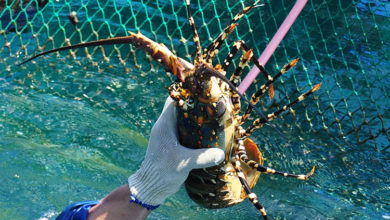
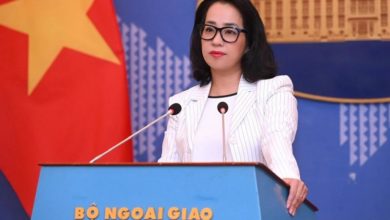
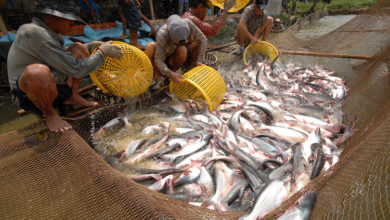
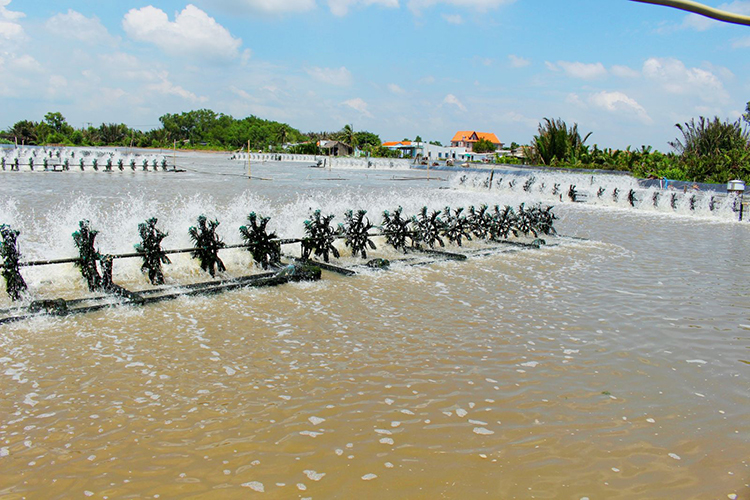
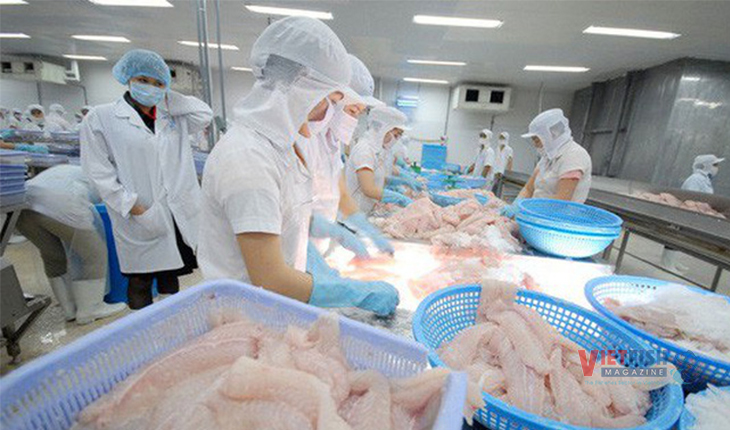
That’s the thkiinng of a creative mind